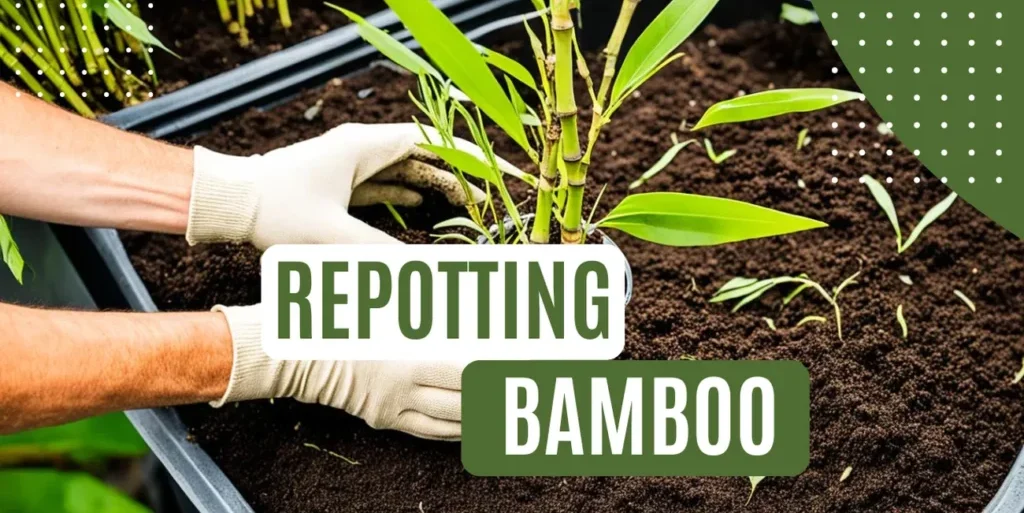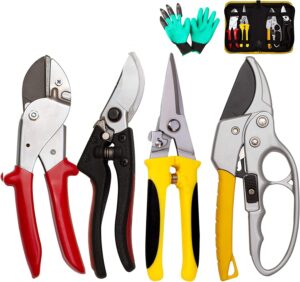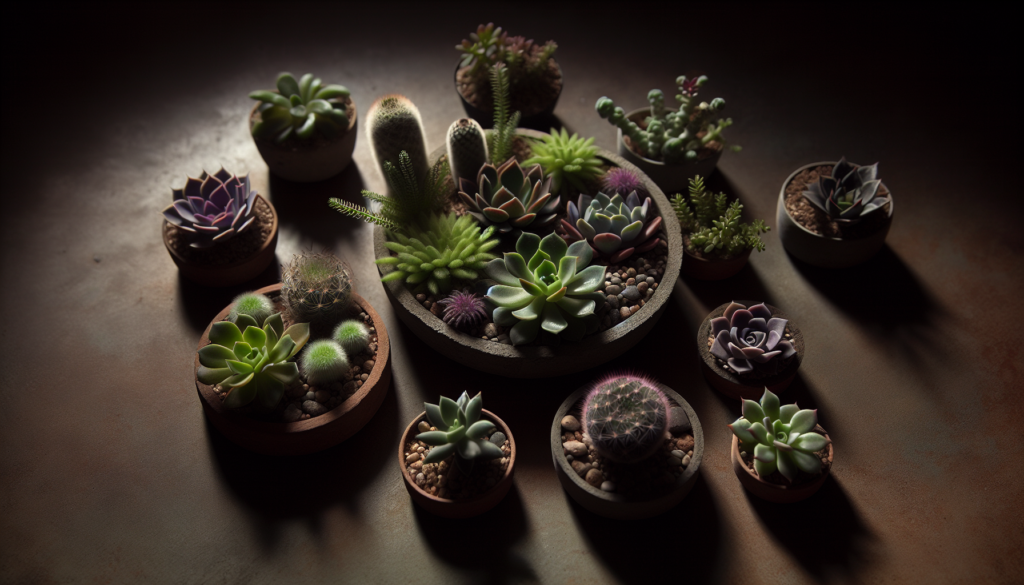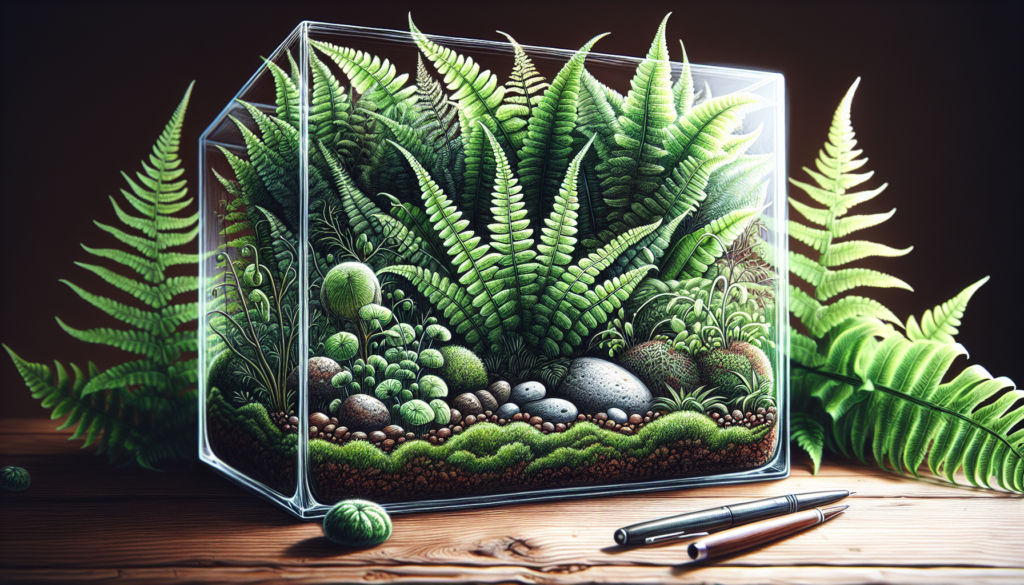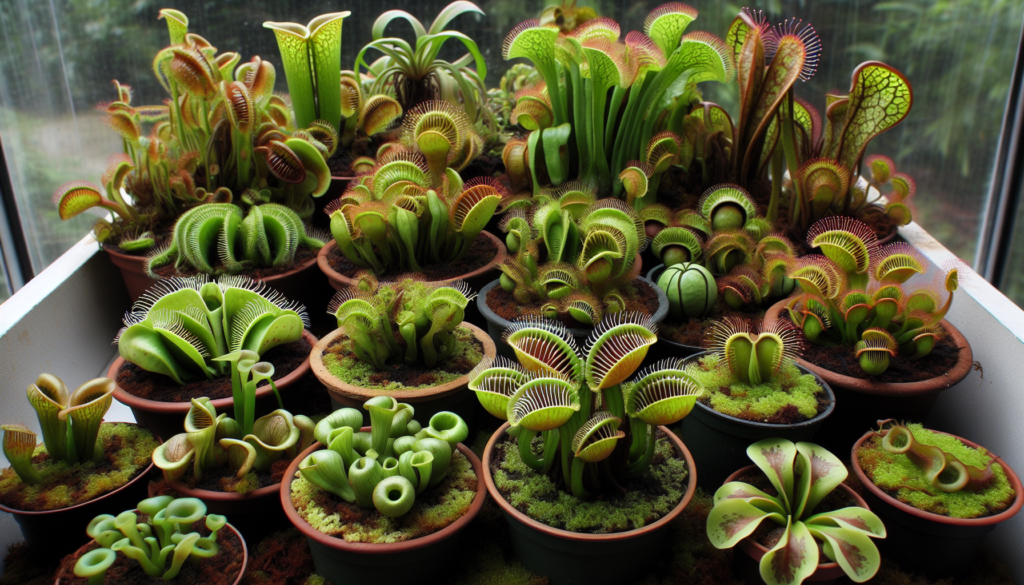To repot bamboo for healthy growth, choose a pot 2 inches larger in diameter than the current one, use fresh potting soil, and water thoroughly after repotting, ensuring good drainage and avoiding waterlogging.
This comprehensive guide offers key techniques for bamboo repotting, emphasizing the importance of timing, container selection, and proper drainage to promote healthy growth and vibrant foliage.
By adhering to these recommendations, gardeners of any level can ensure their bamboo thrives after transition, enhancing its environment and preventing rootbound problems.
Why Repotting is Important for Bamboo Plants
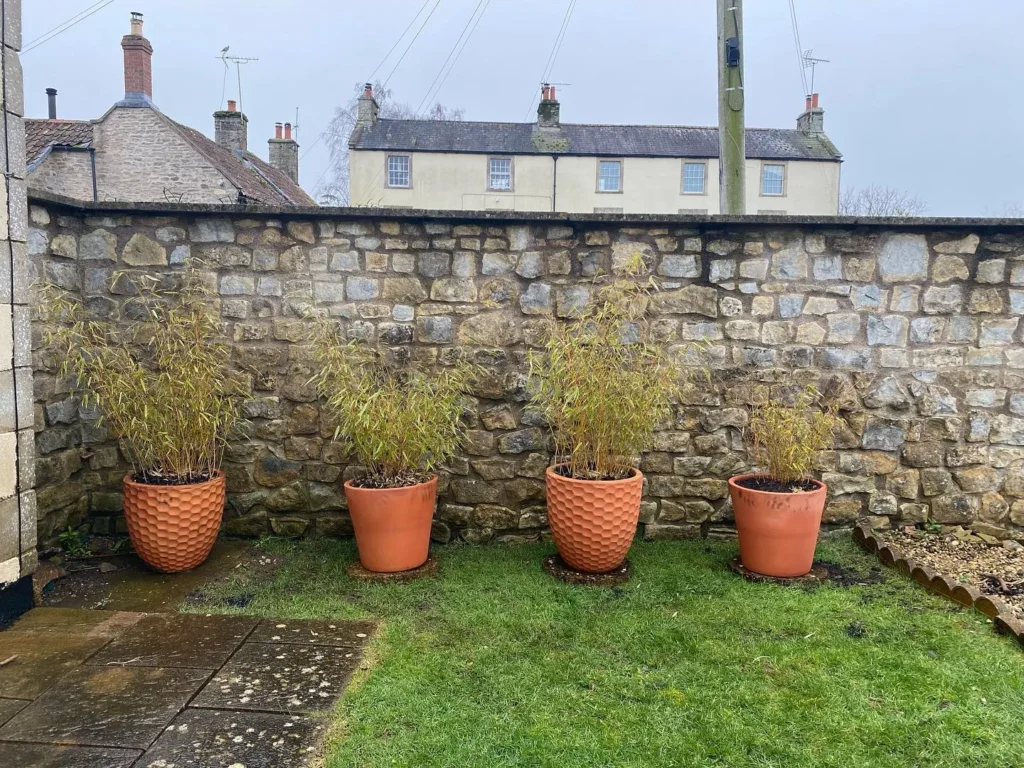
As an avid gardener, I can’t stress enough the importance of repotting bamboo plants. Repotting plays a vital role in the overall health and growth of your bamboo, ensuring it thrives in its new container.
Let’s explore the benefits of repotting and why it should be an essential part of your bamboo care routine.
Improved Drainage
One of the key reasons to repot bamboo is to improve drainage. Over time, the soil in your bamboo’s current pot can become compacted, leading to poor drainage and waterlogging.
Repotting gives you an opportunity to refresh the soil and ensure it drains properly, preventing root rot and other water-related issues.
Fresh Nutrients
Another advantage of repotting bamboo is that it allows you to provide fresh nutrients to your plant. Over time, the nutrients in the potting mix get depleted and may no longer be sufficient to support healthy growth.
By repotting your bamboo, you can replenish the soil with nutrient-rich compost or a suitable fertilizer, giving your plant the nourishment it needs to thrive.
Preventing Rootbound Issues
Bamboo plants have extensive root systems that can quickly outgrow their containers. When the roots become cramped and tangled, the plant becomes rootbound.
Repotting prevents rootbound issues by providing your bamboo with enough space to expand its root system and absorb nutrients effectively. This encourages robust growth and prevents stunted development.
When to Repot Bamboo Plants
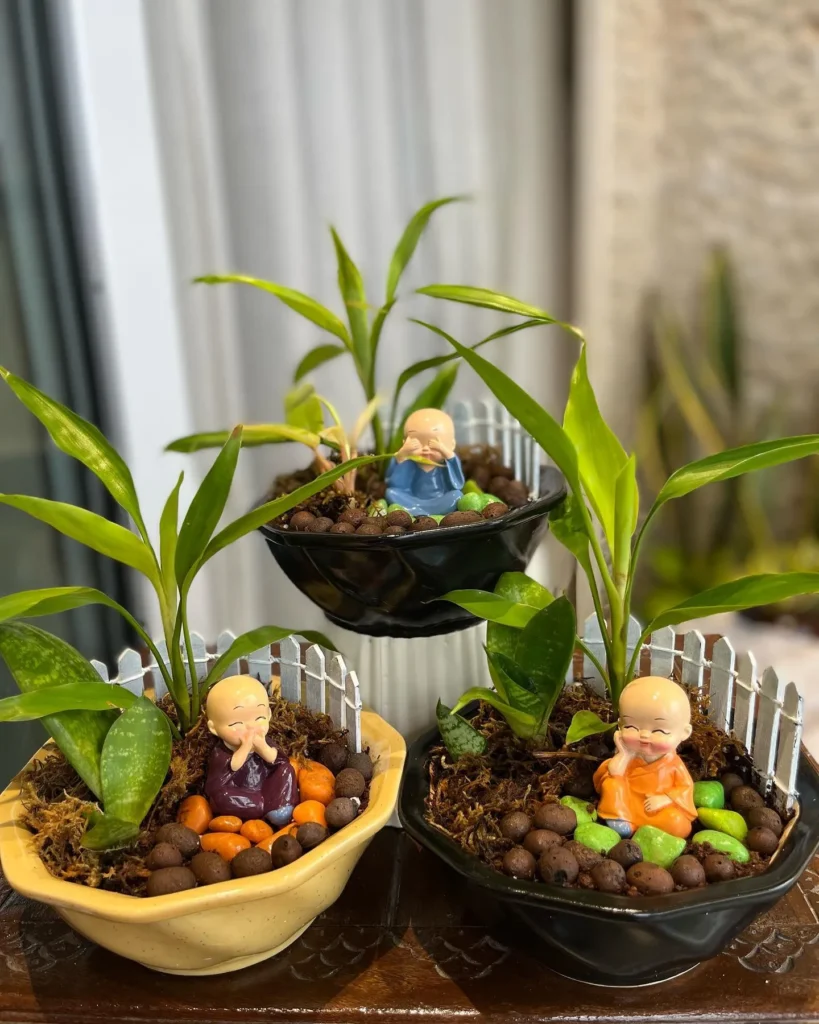
Knowing the best time to repot your bamboo plants is crucial for ensuring their successful transplantation. By observing the signs and considering the ideal season, you can provide your bamboo with the optimal conditions for repotting.
So, how do you determine when it’s time to repot your bamboo plants? Take a look at the following indicators:
- Roots appearing through drainage holes: If you notice roots protruding from the drainage holes at the bottom of the pot, it’s a clear sign that your bamboo has outgrown its container and is ready for repotting.
- Stunted growth or yellowing leaves: When your bamboo starts showing poor growth or the leaves lose their vibrant green color, it may be an indication that the root system is becoming overcrowded in the current pot, and repotting is necessary.
- Slow drainage and waterlogged soil: If the soil in your bamboo’s pot takes a long time to drain after watering, or if the soil remains consistently damp or waterlogged, this could mean that the root system is struggling and needs a larger pot with better drainage to support healthy growth.
Choosing the Right Container for Repotting Bamboo
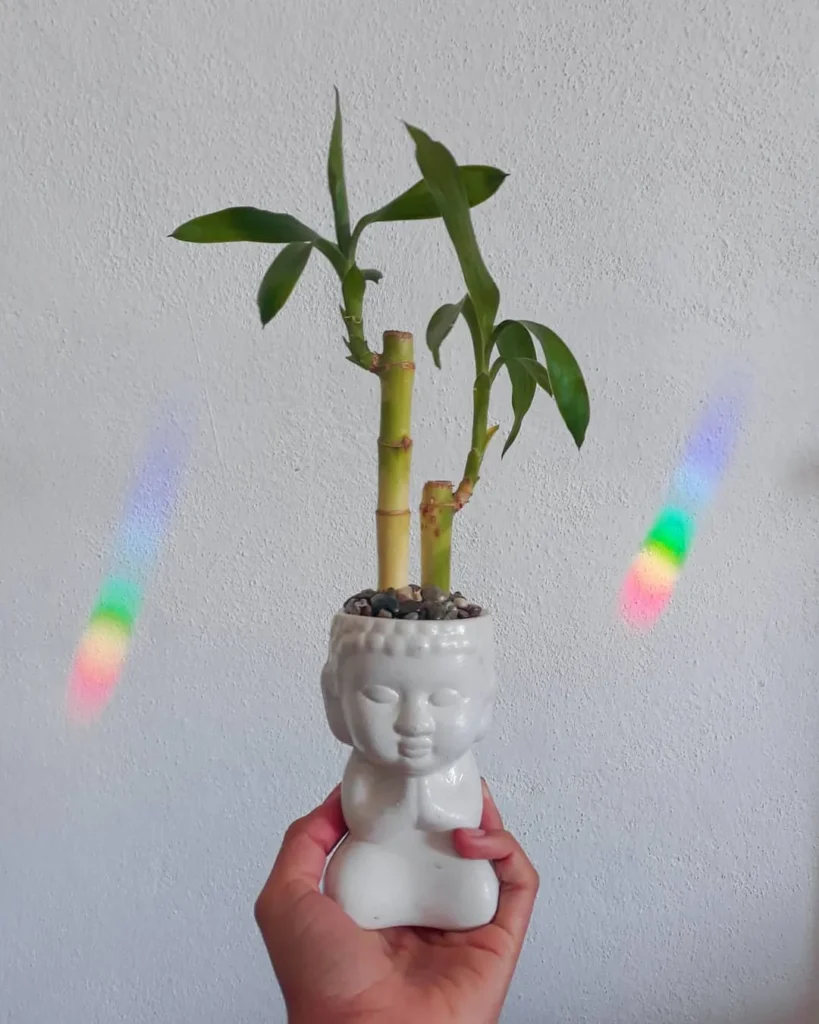
When it comes to repotting your bamboo plants, selecting the right container is crucial for their overall health and growth. The choice of container can impact factors such as drainage, root development, and aesthetic appeal.
Let’s explore some key considerations to keep in mind when choosing a container for repotting your bamboo.
Container Materials
There are various materials available for bamboo plant containers, each with its own advantages and disadvantages. Clay pots provide good drainage and insulation but can be heavy and breakable.
Plastic pots are lightweight, durable, and offer excellent drainage, making them a popular choice. Additionally, fabric pots and natural-fiber containers allow for better airflow and root development.
Container Size
The size of the container is vital for your bamboo’s growth. It’s recommended to choose a pot that provides ample space for the roots to grow and expand.
Small containers can restrict root development, leading to stunted growth, while oversized containers may result in excessive moisture retention. Consider the mature size of your bamboo plant and choose a container that allows it to thrive.
Container Shape
The shape of the container can also impact the growth of your bamboo. Wide, shallow containers provide better stability and prevent top-heavy bamboo plants from tipping.
Tall containers, on the other hand, are suitable for species that tend to spread more horizontally. Select a container shape that suits the growth habit and stability needs of your specific bamboo species.
Aesthetic Considerations
While functionality is essential for your bamboo’s well-being, don’t forget to consider the aesthetic appeal of the container. Choose a pot that complements your indoor or outdoor space and enhances the overall visual impact of your bamboo.
Whether you prefer classic terracotta pots, modern designs, or decorative planters, there is a container that will fulfill both functional and aesthetic requirements.
Preparing for Bamboo Repotting
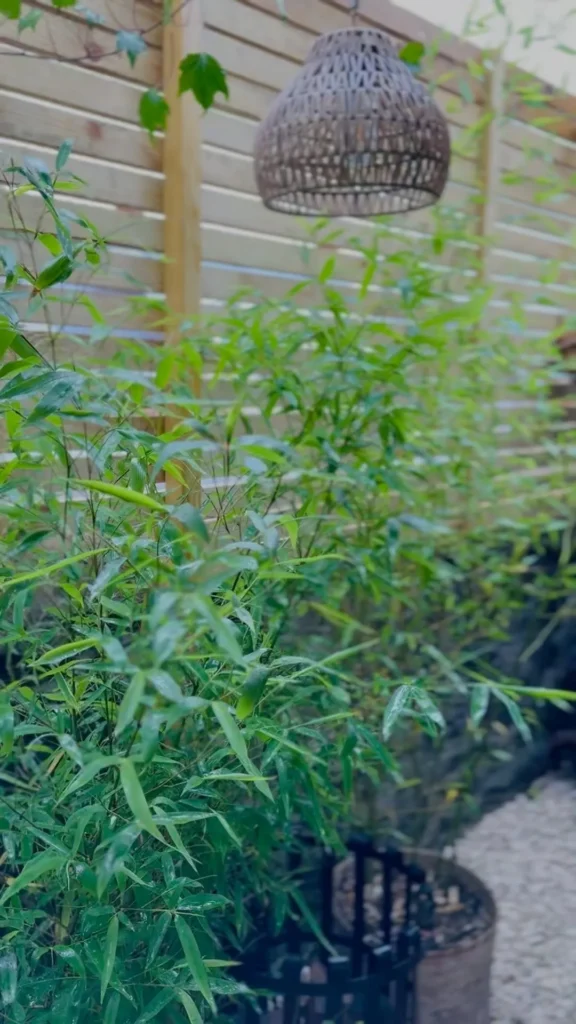
Before embarking on the repotting process for your bamboo plants, it’s crucial to make thorough preparations.
Taking the time to gather necessary tools, select the right potting mix, and create an optimal work area will ensure a smooth and successful repotting experience.
Gather Necessary Tools
Start by collecting the tools you’ll need for the repotting process. Here are some essential items to have on hand:
- Gloves: Protect your hands from any sharp edges or thorns while handling the bamboo.
- Trowel or garden spade: Use these tools to carefully remove the bamboo from its current container.
- Pruning shears: If needed, trim any overgrown or damaged roots before repotting.
- Watering can or hose: Ensure you have a water source nearby to hydrate the plant after repotting.
Select the Right Potting Mix
Choosing the appropriate potting mix is essential to provide your bamboo with the optimal growing conditions. Look for a mix specifically formulated for bamboo or one that offers good drainage and nutrient retention.
Avoid using regular garden soil or heavy clay-based mixes, as they can lead to poor drainage and root rot.
To create a well-draining potting mix for bamboo, consider combining equal parts of loamy soil, perlite, and compost. This blend will provide a balanced mix of nutrients and excellent drainage, promoting healthy root development.
Create an Optimal Work Area
Setting up a conducive work area will help streamline the repotting process. Consider the following tips:
- Choose a stable and spacious area: Select a flat surface, such as a potting bench or a table, to work on. Ensure it is large enough to accommodate your plants and provides enough room for you to maneuver comfortably.
- Protect your work area: Line the work surface with a plastic sheet or newspaper to make cleanup easier and prevent soil and debris from spreading.
Repotting Step-by-Step Guide
Follow this step-by-step guide to safely and effectively repot your bamboo plants. Repotting plays a crucial role in maintaining the health and growth of your bamboo, so it’s essential to follow these instructions carefully.
Step 1: Prepare the New Container
Choose a new container that is slightly larger than the current one to allow for growth. Ensure the pot has drainage holes to prevent waterlogging. Fill the new container with a well-draining potting mix.
Step 2: Remove the Bamboo from its Current Container
Gently tap the sides of the current container to loosen the bamboo’s roots. Carefully lift the plant out, supporting the base of the stem.
If the roots are tightly bound, use a clean knife or garden shears to prune away any encircling or dead roots.
Step 3: Inspect the Root Ball
Examine the root ball for any signs of pests, diseases, or root rot. Trim away any damaged or unhealthy roots using sterilized pruning shears. Ensure the remaining roots are healthy and intact.
Step 4: Place the Bamboo in the New Container
Position the bamboo plant in the center of the new container, ensuring the base of the stem is at the same level as before. Add more potting mix around the roots, gently firming it to eliminate air pockets.
Leave some space at the top to water the plant later.
Step 5: Water the Repotted Bamboo
Thoroughly water the repotted bamboo until excess water drains out of the bottom. This helps settle the soil and ensures proper hydration for the plant. Avoid overwatering, as it can lead to root rot.
Step 6: Provide Adequate Care
Place the repotted bamboo in a location that receives the appropriate amount of sunlight for its species. Monitor the soil moisture and water when the top inch of the soil feels dry.
Implement a regular fertilization schedule to provide essential nutrients for healthy growth.
Caring for Repotted Bamboo Plants
Once you have successfully repotted your bamboo plants, it’s important to provide them with the proper care to ensure their health and adaptability to their new environment.
Follow these essential tips to nurture your newly repotted bamboo:
1. Watering
Proper watering is crucial for the post-repotting care of bamboo plants. Ensure that the soil remains consistently moist but not waterlogged.
As a general rule, water your bamboo when the top inch of the soil feels dry. Adjust the watering frequency based on the climate and specific needs of your bamboo species.
2. Fertilizing
To support the growth and vitality of your newly repotted bamboo, provide it with regular fertilization. Use a balanced, slow-release fertilizer or a bamboo-specific fertilizer according to the manufacturer’s instructions.
Apply the fertilizer around the base of the plant and water it in thoroughly.
3. Monitoring
After repotting, closely monitor the health and progression of your bamboo plants. Keep an eye out for any signs of stress or nutrient deficiencies, such as yellowing leaves or stunted growth.
Promptly address any issues that arise by adjusting watering, fertilization, and other care practices.
4. Light and Temperature
Bamboo plants thrive in bright, indirect light. Place your repotted bamboo in a location with ample natural light, but avoid direct sunlight, as it can scorch the leaves.
Additionally, ensure that the temperature remains within the optimal range for your specific bamboo species, as extreme heat or cold can negatively impact its growth.
5. Pruning
Regular pruning is essential for maintaining the shape and size of your bamboo plants. Remove any dead, damaged, or overcrowded stems to promote healthy growth.
Pruning can also help prevent the spread of diseases and maintain the overall aesthetic appeal of your bamboo.
6. Pest Control
Monitor your repotted bamboo plants for common pests such as aphids, spider mites, and mealybugs. If you notice any infestations, treat them promptly using insecticidal soap or natural remedies.
Regularly inspect the plants and take preventive measures to keep pests at bay.
Troubleshooting Common Repotting Issues
During the repotting process of your bamboo plants, you may encounter various issues that can hinder their successful transplantation.
To ensure the health and growth of your repotted bamboo, it is important to understand and address these common problems. Let’s explore some troubleshooting tips and practical solutions:
1. Root Damage
One common issue during repotting is root damage. This can occur when roots are excessively pruned or injured during the process. To avoid root damage, handle the plant with care and use sharp, clean tools for cutting.
2. Transplant Shock
Transplant shock is another issue that bamboo plants may experience after repotting. This occurs when the plant’s roots are disturbed, leading to temporary stress and reduced growth.
To minimize transplant shock, water the plant immediately after repotting and provide extra shade and protection for a few weeks.
3. Improper Soil Drainage
Poor soil drainage can be a significant problem for repotted bamboo plants. It can lead to root rot and suffocation, negatively impacting their overall health.
Ensure the new container has sufficient drainage holes and use well-draining potting mix specifically formulated for bamboo plants.
4. Nutrient Deficiencies:
As you repot your bamboo, it’s essential to provide it with fresh nutrients in the new container. Nutrient deficiencies can occur if the soil lacks essential elements such as nitrogen, phosphorus, and potassium.
Consider using organic fertilizers or slow-release fertilizers to replenish the nutrients and promote healthy growth.
5. Overwatering or Underwatering:
Both overwatering and underwatering can negatively impact the growth and health of repotted bamboo plants. Pay attention to the moisture levels in the soil and adjust your watering schedule accordingly.
The ideal watering practice is to keep the soil consistently moist, but not waterlogged.
FAQ
Are you curious about the ins and outs of bamboo repotting? In this section, I’ll address some common questions that bamboo enthusiasts often have. Let’s dive in!
Q: How frequently should I repot my bamboo plants?
A: The frequency of repotting your bamboo plants depends on their growth rate and the size of the container they are currently in. As a general guideline, repotting every 2-3 years is recommended for most bamboo species.
Keep an eye on the plant’s root system, and if it becomes crowded or starts to outgrow its current pot, it’s time to repot.
Q: What potting mix should I use for bamboo repotting?
A: When selecting a potting mix for repotting bamboo, opt for a well-draining mix that retains moisture while allowing excess water to escape. A blend of peat moss, perlite, and compost works well for most bamboo species.
Avoid using heavy or compacted soils that can hinder root growth.
Q: How do I handle bamboo plants with intricate root systems during repotting?
Handling bamboo plants with intricate root systems can be a delicate task. Take your time and gently loosen the soil around the roots using your hands or a garden tool.
If necessary, prune any overly long or tangled roots to encourage healthy growth in the new container. Be careful not to damage the roots excessively.
Q: Can I repot bamboo during any season?
A: The best season to repot bamboo plants is during their active growth period, which is typically in spring or early summer. However, certain bamboo varieties can tolerate repotting during other seasons as well.
It’s important to consider your bamboo species and its specific needs when choosing the repotting time.
Q: What should I do if my bamboo plant experiences transplant shock after repotting?
A: Transplant shock is a common concern after repotting bamboo. To help your plant recover, provide it with adequate water and place it in a shaded area for a few days to reduce stress.
Avoid fertilizing immediately after repotting, as this can further stress the plant. With time and proper care, your bamboo should bounce back.
Tips for Repotting Bamboo in Different Climates
When it comes to repotting bamboo, the climate you live in plays a crucial role in determining the success and health of your plants. Whether you reside in a hot and humid region or a cold and dry area, it’s essential to consider climate-specific factors when repotting your bamboo.
Here are some useful tips to help you adapt the repotting process to various climate conditions:
Hot and Humid Climate: If you live in a hot and humid climate, such as parts of the southern United States, it’s important to monitor the moisture levels of your bamboo’s new container.
Use a well-draining potting mix and avoid overwatering to prevent root rot. Additionally, consider providing some shade to protect your bamboo from intense sunlight.
Cold and Dry Climate: In colder and drier climates, like those found in the northern United States, it’s crucial to protect your bamboo from extreme cold temperatures.
Choose a potting mix that retains moisture to ensure your bamboo receives adequate hydration. Consider insulating the container during freezing temperatures to safeguard the plant’s roots.
Moderate Climate: If you reside in a region with moderate climate conditions, such as parts of the Midwest or the Pacific Northwest, it’s important to strike a balance in your repotting approach.
Use a well-draining potting mix that retains some moisture without becoming waterlogged. Monitor your bamboo’s watering needs based on the specific weather conditions in your area.
Final Thoughts on Bamboo Repotting for Healthy Growth
As we come to the end of this guide, it’s important to reflect on the significance of repotting your bamboo plants for their healthy growth.
By providing adequate care, regular repotting, and adapting techniques to suit your specific bamboo species, you can ensure the long-term success and vitality of these beautiful plants.
Bamboo repotting is a crucial step in promoting healthy growth. It allows the plant to establish a strong root system, access fresh nutrients, and prevent rootbound issues.
When you repot your bamboo at the right time using the correct container and potting mix, you create a favorable environment for its growth and development.
Remember to prioritize the post-repotting care of your bamboo plants. Water them appropriately, monitor their progress, and provide proper fertilization.
These practices, combined with a well-planned repotting routine, will contribute to the overall health and vigor of your bamboo, ensuring it thrives and flourishes in its new home.

